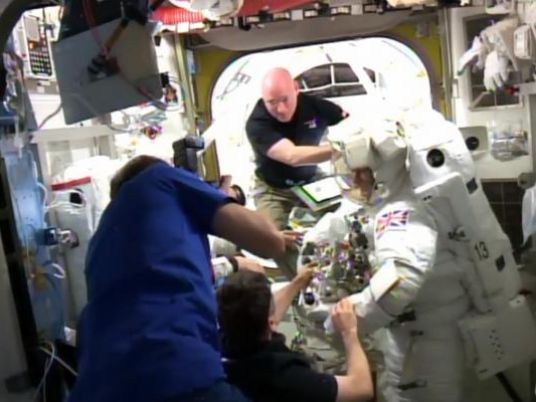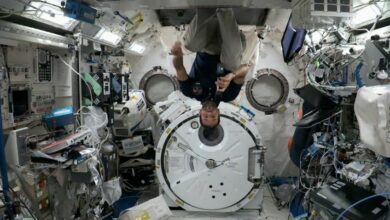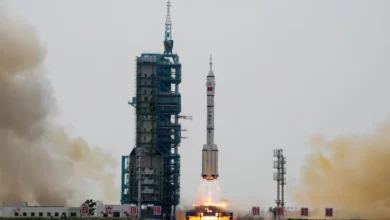
NASA cut short a spacewalk on Friday at the International Space Station after one of the astronauts reported a leak in his spacesuit helmet, the US space agency said.
Tim Peake, who on the mission became the first astronaut from Britain to walk in space, and US astronaut Tim Kopra had finished the primary goal of their outing when Kopra reported a water ball had formed in his helmet.
The astronauts were not in any danger, but NASA curtailed the spacewalk as a precaution, flight director Royce Renfrew said during an interview on NASA TV.
Peake, 43, a former army major, blasted off to the station as part of a six-month mission for the European Space Agency in December, becoming the first Briton in space since Helen Sharman traveled on a Soviet spacecraft for eight days in 1991, and the first to do so under a British flag.
His mission has attracted widespread attention in Britain, with news channels beaming live coverage of the spacewalk.
"We're all watching, no pressure! Wishing you a happy stroll outdoors in the universe," British musician Paul McCartney said on Twitter.
About three hours into Friday’s spacewalk, Kopra, 52, reported that his helmet pad was damp and a ball of water had collected in his helmet, prompting NASA to end the mission.
The leak increased as Kopra and Peake returned to the airlock.
“It was quite noticeable,” Kopra later told ground controllers.
NASA tightened its flight rules after a spacesuit worn by Italian astronaut Luca Parmitano leaked during a spacewalk in July 2013, nearly causing him to drown.
NASA eventually tracked down the source of the problem and outfitted the helmets with absorption pads and breathing snorkels as additional safety measures.
Chief astronaut Chris Cassidy, who was Parmitano’s partner during the aborted 2013 spacewalk, said the cold temperature of the water indicated a leak from somewhere in the spacesuit’s backpack, which contains a cooling system.
In an interview on NASA TV, Cassidy called it “a significant concern.”
Kopra and Peake had replaced a failed voltage regulator in the station's power system shortly after leaving the station’s airlock at around 8 am EST/1300 GMT.
They were scheduled to spend more than six hours outside the station, a US$100 billion research laboratory that flies about 250 miles (400 km) above Earth, on other maintenance chores.
That work will be rescheduled, NASA said.




